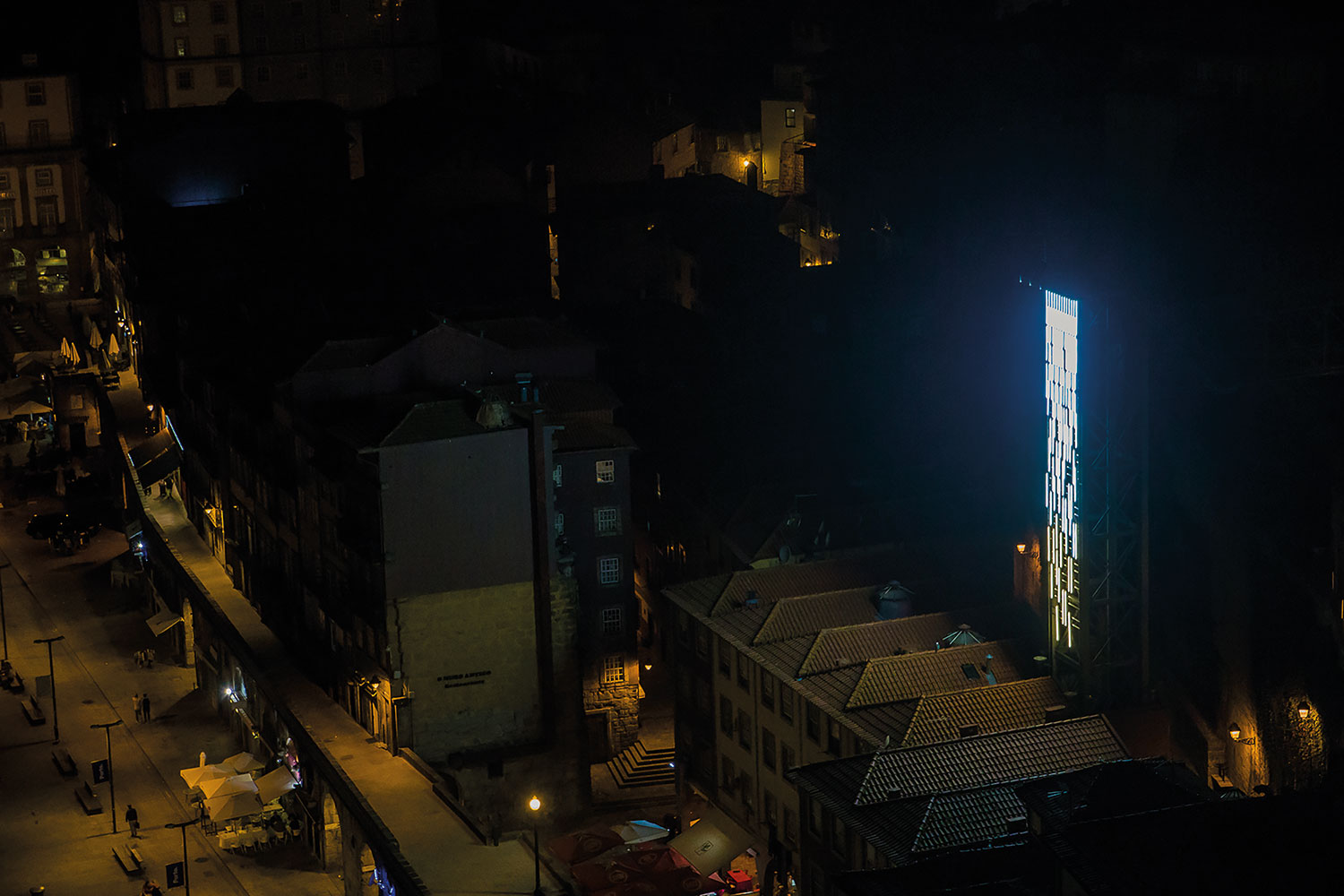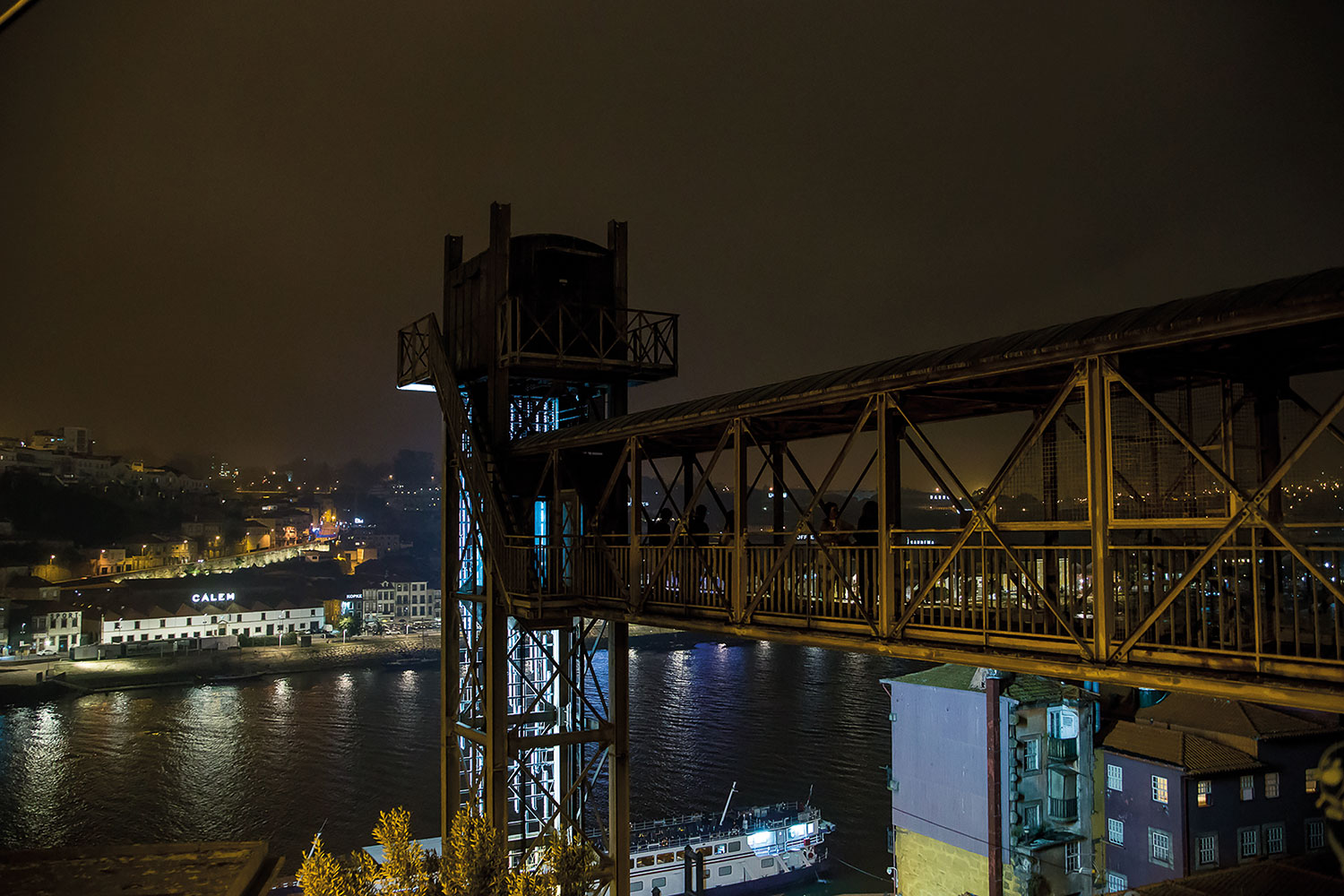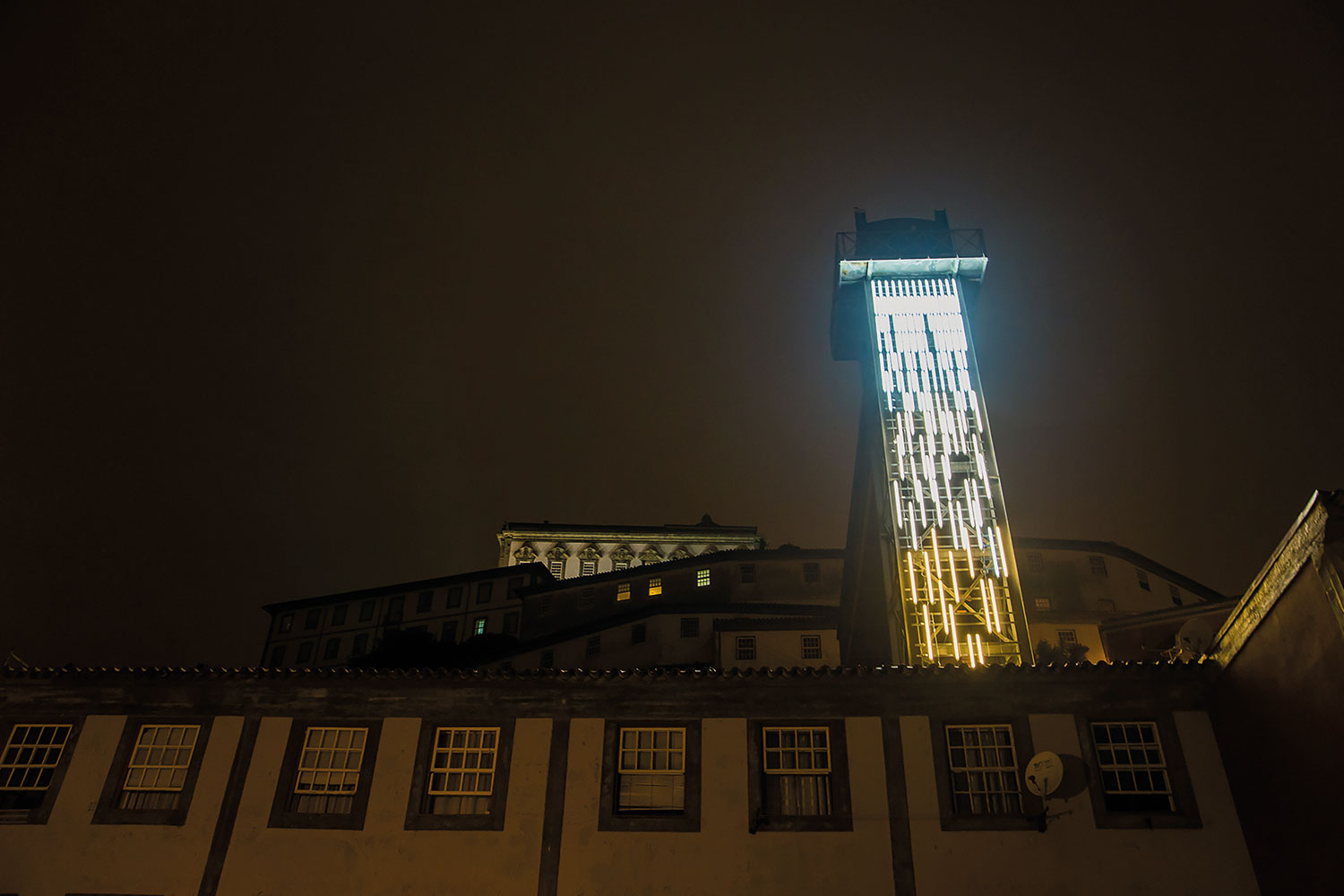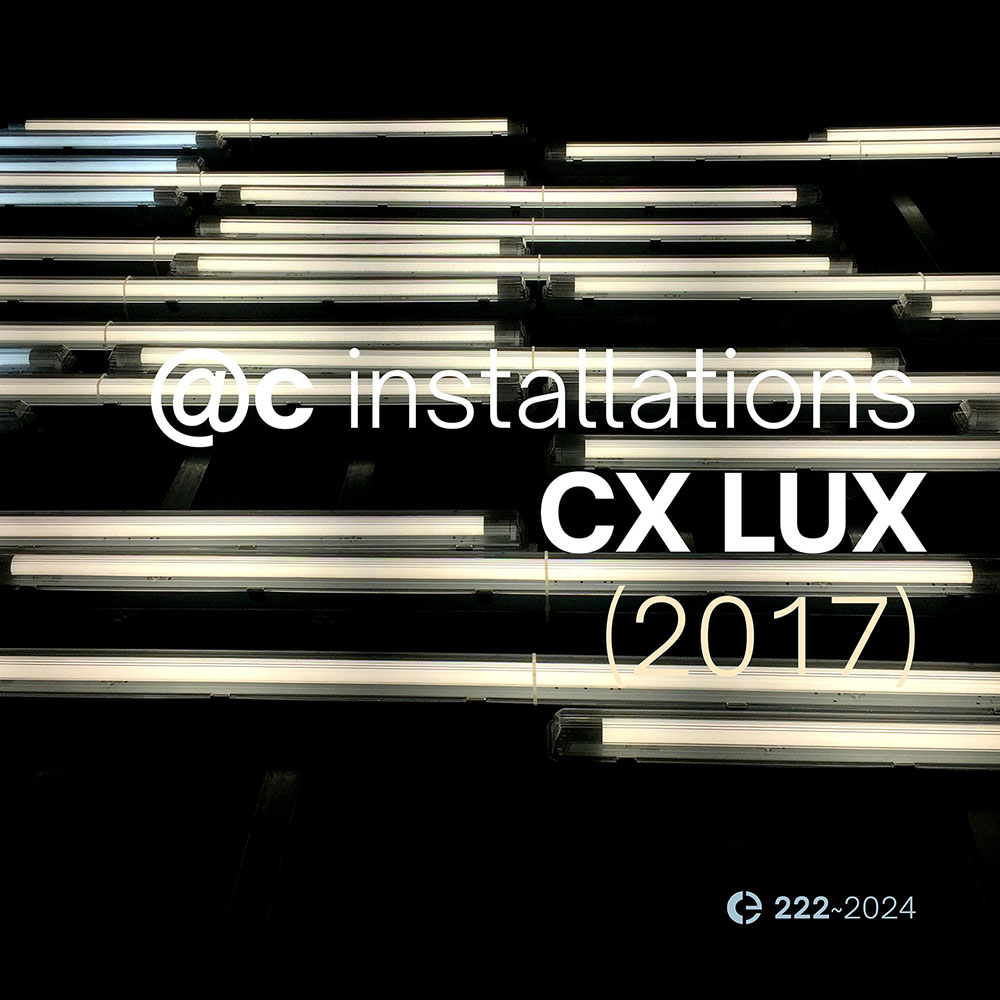
LED lamps, steel structures, loudspeakers, sound and electric cables, audio DVD.
May to July 2017, Elevador da Lada, Porto. Commissioned by PortoLazer for Alumia. Curated by Cláudia Melo.
Electricity and steelwork: Sérgio Magalhães, Jorge Borges, Rui Silva, António Costa, Bruno Costa. Rigging and suspension: António Quaresma, Filipe Silva, Joaquim Marques, Hugo Almeida.

When asked to create an open-air installation for the summer 2017 program of Alumia that the city of Porto organised, it took us some time to decide on a location to work with. We scouted several sites, eventually settling for the lift at Lada, in Porto’s Ribeira district, a towering structure inspired by the nearby 19th century bridges, housing an elevator that connects the riverside streets with the higher parts of the city. One of the oldest parts of town, traditionally a business and residential area, Ribeira is now one of Porto’s tourist centres, which puts significant pressure on its inhabitants, forced to deal with the resulting noise and gentrification.
While developing this piece, we spent time embedded in a neighbourhood that has long been familiar to us but in which neither of us had lived. We met people, explored the meandering streets and researched the radical transformations that the area experienced during the lifetimes of their inhabitants. What we learned led us to develop a piece that was, much as Ribeira, continuously transforming. With a daytime sound installation at the upper-level passageway of the lift and a nighttime light installation at the tower’s frontal façade, CX LUX was composed of two halves that never intersected, which could only be related in the memory of viewers. Despite its immediate visual impact at night, this piece required coexistence and time to be fully discovered. As such, we built it for the residents rather than for the occasional passersby.
The sound installation evoked the lost soundscapes of Ribeira, bringing back keynote sounds that vanished due to the relocation of businesses and demographic changes. Some of the examples that residents pointed included the bells in many churches that are no longer active, or the sounds of livestock (and their bells) from a market that has long been relocated from what now is the foot of the lift. In their many forms, bells became the central conceptual starting point for a composition created to blend with the soundscape of Ribeira.


Thank you to: Cristina Varela Pinto, Liliana Pinto, Ana Costa, Eduardo Maltez, Jorge Morais and José Carlos de Paiva at FBAUP, Andreia Oliveira at Centro Social São Nicolau, Ds. Julieta, Adelaide, Maria Fernanda, Laura, Joaquina, Carlota, Marília, Orquídea, Roseta, Escola Superior de Educação – AVTA. Photos by Sara Santos Silva.
